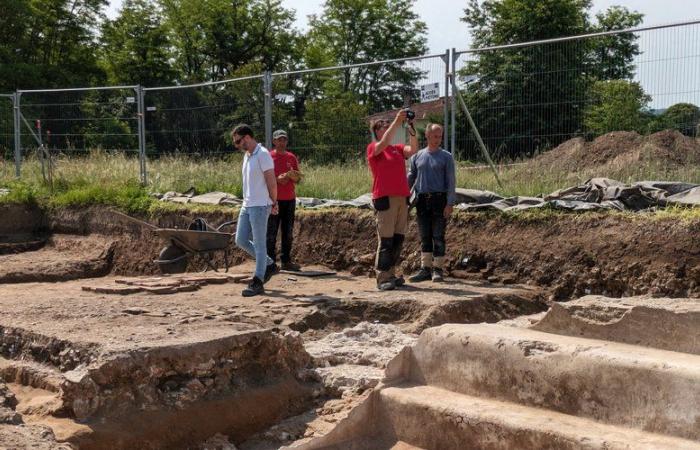the essential
The Gallo-Roman site of Excisum, Eysses for those who may still be unaware of it, reveals new discoveries made each year during successive excavations carried out by the National Institute for Preventive Archaeological Research (Inrap).
The latest report has just been released on the Inrap website. It concerns the preventive excavation campaign carried out in June on the construction site of a house in Eysses. A mandatory and essential operation when you decide to build in this area.
This time, the work in question was located within the grounds of the former Excisum military camp. “The first military constructions are attributed to the middle of the Iis century AD These are buildings made of earth and wood resting on gravel flashings which were spread over the entire plot. Their functions, which escape us for the moment, but are at least partly artisanal, will be clarified during the study phase of the operation.
Hot and cold rooms, stands, these are thermal baths
It was during the digging of the foundations of the house and the location of the future swimming pool that the thermal baths were discovered. “The operation reveals that between the end of the Iis and the beginning of IIe century AD, monumental thermal baths were built, to the east of the principiawhich constitute the central building of the camp. It is the rear part of this building which was uncovered during the excavation. It consists of a minimum of six rooms having been the subject of at least two successive phases of development” we can read in the report.
Excavations and discoveries in the field also allow archaeologists, after their analysis, to discover how these thermal baths were organized. “Built against the rear façade wall of the thermal baths, to the northwest of the complex, two service rooms belong to a phase of redevelopment of the latter. They are partly in the basement, which has ensured very good conservation of their operating levels correspond to boiler rooms associated with hot rooms which developed in their extension towards the south. One reveals the location of the successive boilers which have disappeared, while the second is a heating channel cutting into the old one. facade wall”.
Cold rooms and stands were also discovered. “To the east, a cold room adjoins a pool of approximately 12 m² and a depth of 1.5 m. Access is on its north side via three tiers, while to the south, a gutter evacuates wastewater towards a sewer, which runs alongside the monument on its north and east sides.
This plot of land has therefore been excavated and documented and allows archaeologists to complete the history of Excisum. “The remains of previous buildings will shed light on the function of the spaces before the construction of the thermal baths. The reoccupations of the site in the medieval and modern periods constitute another important axis of the operation” they conclude. A story that is not about to end any time soon, as the possibilities for discovery are so great.






